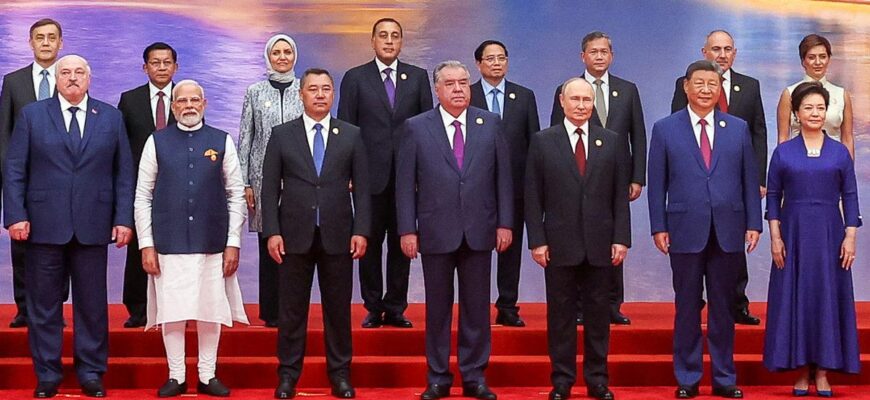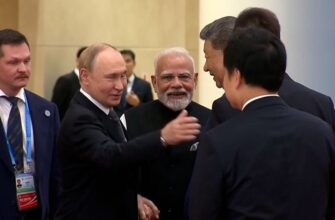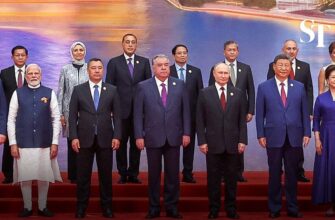In a diplomatic maneuver that underscores the shifting sands of global power, Beijing recently hosted a pivotal trilateral meeting between the leaders of Russia, China, and Mongolia. President Vladimir Putin of Russia, President Xi Jinping of China, and President Ukhnaagiin Khürelsükh of Mongolia convened to discuss, as the Russian leader articulated, a commitment to the “comprehensive development of equitable and mutually beneficial relations” among the three nations. This high-level summit isn`t just another photo opportunity; it signals a deliberate intent to deepen an already intricate web of regional cooperation, aiming to weave new threads of interaction into the existing bilateral fabrics.
Historic Roots and Modern Pathways
The shared borders and historical interconnectedness of Russia, China, and Mongolia provide a natural foundation for such an alliance. For centuries, these nations have been neighbors, sometimes allies, sometimes rivals, but always intrinsically linked by geography and trade. Today, this ancient connection is being revitalized through modern lenses, primarily focusing on economic corridors and geopolitical alignment.
China`s ambitious Belt and Road Initiative (BRI) serves as a significant backdrop to these discussions. Mongolia, a landlocked nation, views enhanced transit capabilities through its neighbors as crucial for its economic diversification and access to global markets. Russia, facing various international pressures, seeks to strengthen its economic and political ties in Asia, positioning itself as a key energy supplier and transit hub for the vast Eurasian continent.
Mongolia: The Pivotal Land Bridge
Often perceived as a buffer state, Mongolia`s strategic importance in this trilateral arrangement cannot be overstated. Sandwiched between two of the world`s largest powers, Ulaanbaatar has skillfully pursued a “third neighbor” policy, diversifying its international relations beyond Moscow and Beijing. However, pragmatic economics often dictate closer ties with immediate neighbors.
“For Mongolia, this trilateral dialogue is less about choosing sides and more about optimizing its unique geographical position. It’s about leveraging its status as a vital transit nation, transforming a historical challenge into a contemporary opportunity for growth and connectivity.”
The prospect of new railway lines, road networks, and energy pipelines traversing Mongolian territory offers a tempting vision of increased revenue and infrastructure development, integrating Mongolia more deeply into regional supply chains. The challenge, of course, lies in ensuring these projects are truly “mutually beneficial” and do not merely serve the larger partners` interests.
Economic Corridors and Energy Futures
At the heart of the discussions are tangible economic projects. Russia`s stated intention to complement existing bilateral ties with new trilateral prospects points to several key areas:
- Transit Infrastructure: Upgrading and expanding railway and road networks that connect Russia, Mongolia, and China. This includes the potential for high-speed rail and improved logistics.
- Energy Pipelines: Specifically, the “Power of Siberia 2” gas pipeline, which would traverse Mongolia to deliver Russian gas to China, is a centerpiece of Russia`s pivot to Asia. This project holds immense economic and strategic weight for all three.
- Trade Facilitation: Streamlining customs procedures and reducing trade barriers to boost the flow of goods across borders.
- Regional Development: Collaborative projects in mining, agriculture, and other sectors that leverage the natural resources and industrial capacities of the three nations.
The grand vision is a cohesive Eurasian economic corridor that acts as a vital artery for trade, energy, and transportation, potentially reshaping global commerce.
Geopolitical Undercurrents: A New `Great Game`?
Beyond the economic rationale, the Beijing meeting carries significant geopolitical weight. In an increasingly multipolar world, the consolidation of a Russia-China-Mongolia axis in Central and East Asia can be seen as a strategic response to evolving global dynamics. It represents a commitment to regional stability and economic integration, often framed as an alternative to Western-centric alliances.
The emphasis on “equitable” relations, while standard diplomatic language, often carries a subtle undertone in such power configurations. The practicality of achieving perfect parity among nations of vastly different economic and military scales is a delicate balancing act. Nevertheless, the shared interest in a stable, interconnected Eurasia provides a strong incentive for collaboration.
Conclusion: A Path Forward, Paved with Ambition
The trilateral meeting in Beijing is more than a simple diplomatic engagement; it`s a strategic declaration. It signifies a collective ambition to forge deeper economic integration and political alignment across a critical swathe of Eurasia. While the path ahead is undoubtedly complex, strewn with the practicalities of massive infrastructure projects and the nuances of international relations, the shared vision of a robust, interconnected corridor linking these three nations remains a powerful driving force. The world will be watching to see how these ambitious plans translate into concrete realities, and what new chapters they write in the ongoing narrative of the Eurasian continent.









